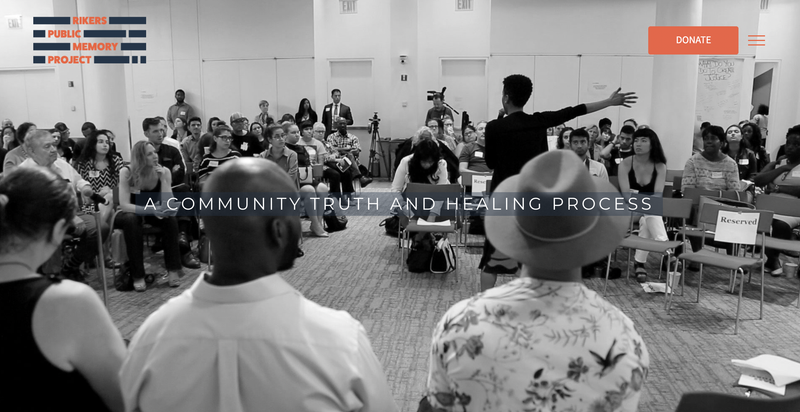
Rikers Public Memory Project Exhibit
With Rikers Public Memory Project
Rikers is part of New York City and New Yorkers are responsible for what happens at Rikers. Rikers is a site of mass death. It is also a place of deep personal loss. To stop the trauma caused by Rikers from continuing, Rikers must close and cash bail must end. The experiences and knowledge of Rikers survivors are essential to understanding how NYC communities have been harmed by mass incarceration and what it will take to rebuild. These are the messages at the heart of this exhibit, co-designed with community members directly impacted by Rikers.
The Rikers Public Memory Project is a community-based, participatory initiative through which collective stories about the impact of Rikers are activated to envision a more just NYC. Educating all New Yorkers about the legacy of Rikers Island is essential to sustaining public attention and engagement as we move towards the Island’s closure. The locus of public engagement of the Rikers Public Memory Project is a mobile exhibit that uses art and multimedia storytelling to take the narratives of those most impacted to the places where Rikers remains unseen. This initiative came after a year-long listening tour during which those who have been incarcerated at Rikers, their loved ones, and local community activists and advocates shared that educating the broader New York Community about Rikers Island should be the project’s main priority moving forward. The mobile exhibit will serve as a means of educating, influencing, and engaging policymakers, neighbors, students, and other stakeholders in the process of closing Rikers and healing from its harms.
RPMP engaged Research Action Design and Scaffold Exhibits to engage in an exhibit codesign process conducted with impacted communities.
The Rikers Public Memory Project (RPMP) exhibition draws on recently-recorded oral histories with over 100 formerly incarcerated people and their loved ones. The exhibition invites everyday New Yorkers into conversation and action about the past, present and future of Rikers jail complex.
Through interactive experiences, the exhibit will connect visitors to the personal experiences of the people who have lost their freedom and suffered harm to their health, well-being, and personhood under the violences of incarceration at Rikers. Though a uniquely brutal place, Rikers in this exhibit emerges as part of a larger New York City history of racist strategies to control the lives and labor of New Yorkers, and particularly of communities of color, part of an important undercurrent of American history.
